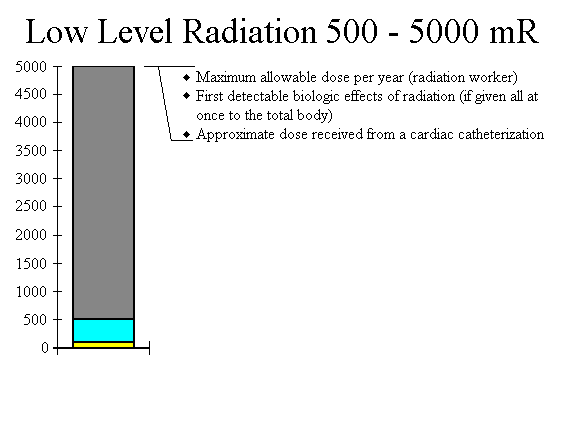
The previous graph (50-500 mR) has been compressed by a factor of 10 and is illustrated as the lower portion of the above bar.
The federal government sets the uper limit of annual radiation exposure to a radiation worker (such as a radiologist or radiation technician) at 5000 mR. This is 50 times the amount that a member of the general public can be exposed to. It is at this level that the first biological effects of radiation can be seen. These effects are very subtle and requires special laboratory techniques to identify. The changes seen occur in the white cells, and are indistinguishable from a mild viral infection. The findings occur only if the radiation dose is acute (given over a very short period of time) and to the total body. Exposures that are divided over the period of a year or localized to a specific area show no biological changes.
The dose of 5000 mR is also the approximate dose received when having a cardiac catheterization performed. This radiation dose however is localized to the chest area and occurs during fluoroscopy. Depending on the technique of the physician, this dose may be significantly higher.